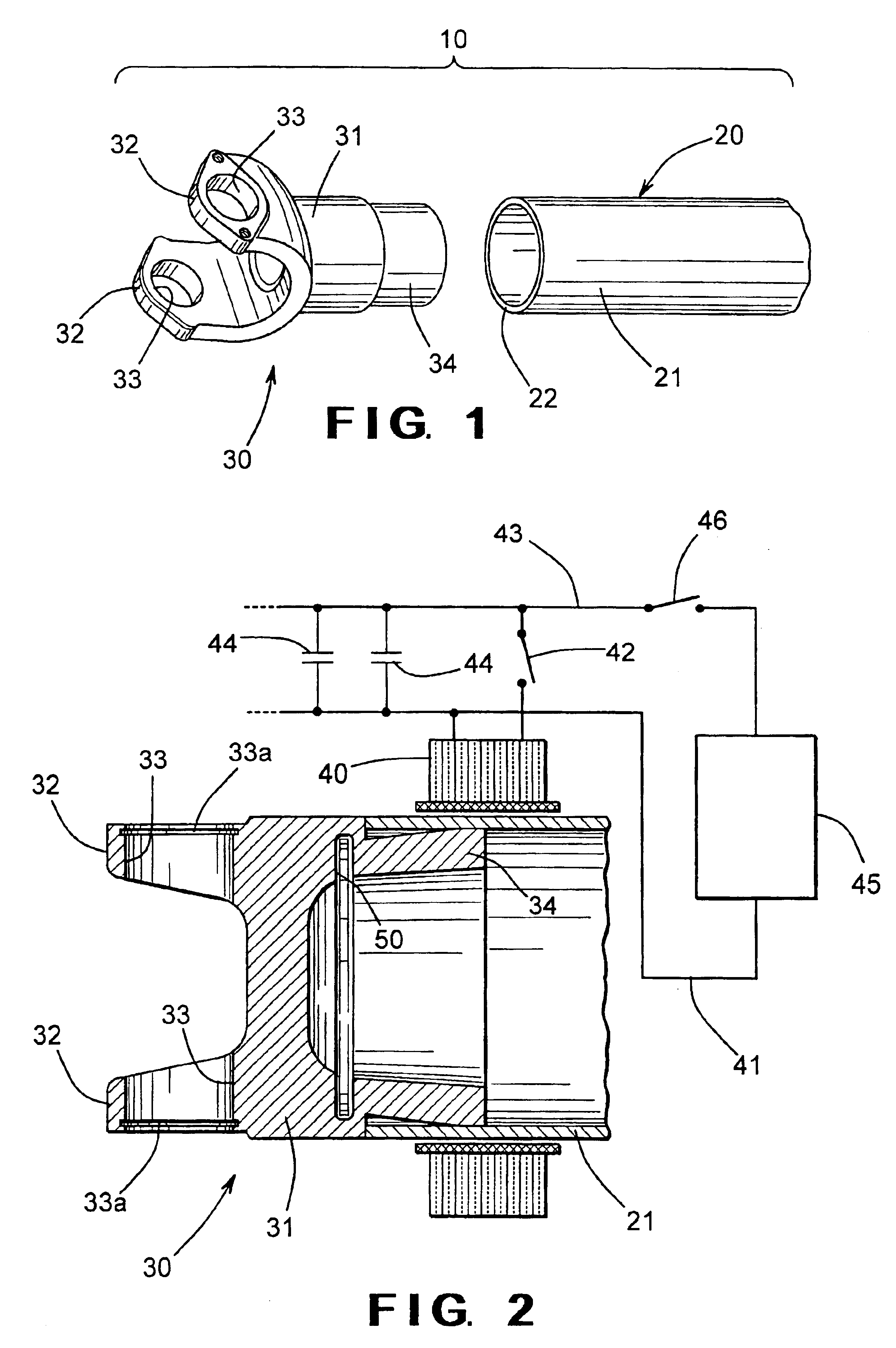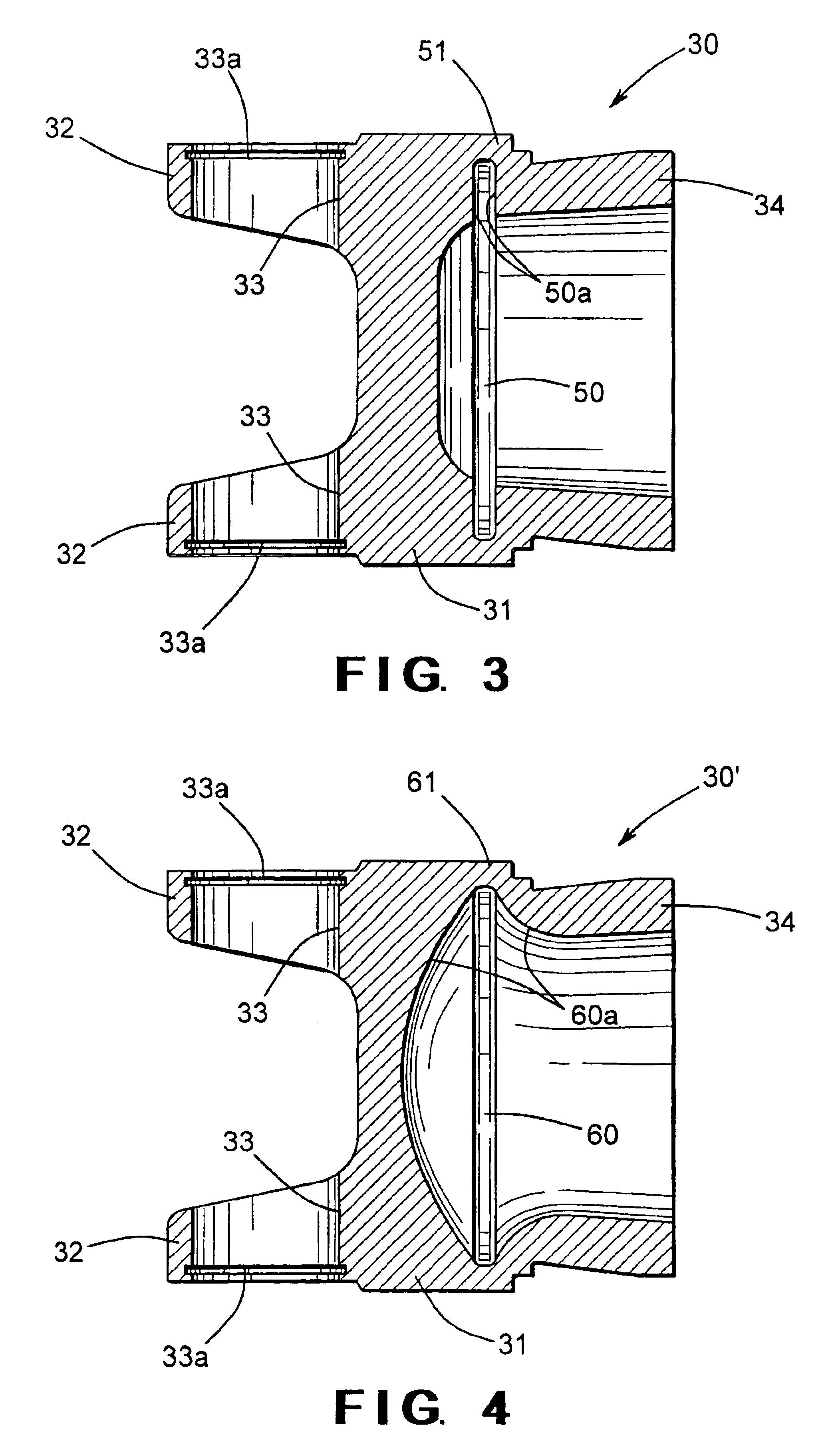Yoke structure that is adapted to be secured to a tube using magnetic pulse welding techniques
a technology of magnetic pulse welding and yoke structure, which is applied in the direction of welding apparatus, couplings, manufacturing tools, etc., can solve the problems of undesirable distortion and weaknesses of metallic components, corrosion of two metallic members, and conventional welding techniques that may or may not be performed with pressure, so as to limit the propagation of shock waves and minimize the amount of undesirable distortion
- Summary
- Abstract
- Description
- Claims
- Application Information
AI Technical Summary
Benefits of technology
Problems solved by technology
Method used
Image
Examples
Embodiment Construction
[0018]Referring now to the drawings, there is illustrated in FIGS. 1 and 2 a portion of a vehicular driveshaft assembly 10 that includes a driveshaft tube, indicated generally at 20, and a first embodiment of an end fitting, indicated generally at 30. Although this invention will be described and illustrated in the context of securing an end fitting to a driveshaft tube to form a portion of a vehicular driveshaft assembly, it will be appreciated that the method of this invention can be used to secure any two metallic components together for any desired purpose or application.
[0019]The illustrated driveshaft tube 20 is generally hollow and cylindrical in shape and can be formed from any desired metallic material, such as 6061 T6 aluminum alloy, for example. Preferably, the driveshaft tube 20 has an outer surface that defines a substantially constant outer diameter and an inner surface that defines a substantially constant inner diameter. Thus, the illustrated driveshaft tube 20 has a...
PUM
| Property | Measurement | Unit |
|---|---|---|
| axis of rotation | aaaaa | aaaaa |
| shape | aaaaa | aaaaa |
| rotational power | aaaaa | aaaaa |
Abstract
Description
Claims
Application Information
 Login to View More
Login to View More - R&D
- Intellectual Property
- Life Sciences
- Materials
- Tech Scout
- Unparalleled Data Quality
- Higher Quality Content
- 60% Fewer Hallucinations
Browse by: Latest US Patents, China's latest patents, Technical Efficacy Thesaurus, Application Domain, Technology Topic, Popular Technical Reports.
© 2025 PatSnap. All rights reserved.Legal|Privacy policy|Modern Slavery Act Transparency Statement|Sitemap|About US| Contact US: help@patsnap.com



